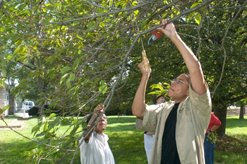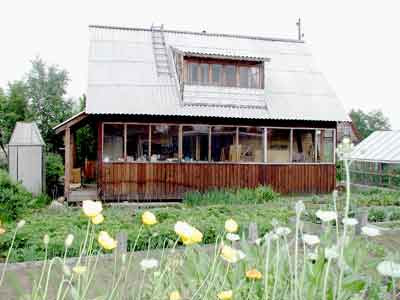This is Part Two in a series looking at Dharavi, a mostly informal township in Mumbai often referred to as Asia’s largest slum, and the government’s controversial plans to redevelop it. With billions of dollars on the table, tens of thousands of homes and businesses at stake, and the global spotlight shining bright, this case of contested urban space is worth a deeper look. “Dharavi is a black hole – something we should be ashamed of.”
-Mukesh Mehta, “
Slum in the Way of Mumbai’s Progress,” BBC News, 21 March 2007
“Asia’s largest sprawl of squalor – the Dharavi slum – breathed below.”
-Aditya Ghosh, “
Final plan for Asia’s largest slum ready,” Hindustan Times, 07 February 2008
“Dharavi has always been a permanent eyesore to foreign travellers flying to India.”
-“
Blueprint for a new Dharavi,” The Financial Express, 17 June 2007

Dharavi is almost universally branded as a massive “slum.” This terminology is taken for granted in most mainstream media accounts, government designations and the popular imagination. In fact, the planning authority for Dharavi is the state’s Slum Rehabilitation Authority.
Even in the legal sense, this term is an inaccurate generalization. According to Sharad Mahajan of MASHAL, an NGO that managed GIS mapping and data collection for the government’s
official survey of Dharavi, the 59,316 "slum structures" counted in the survey occupy around 396 of 590 acres. The rest of the area includes government-owned properties (including buildings developed under previous upgrading schemes), a Tata power station, a BEST bus station, Mahim Nature Park, a cemetery, railway facilities, private industrial and residential buildings, and streets (many paved by the municipality).
Koliwada, a historical fishing village that existed before Bombay did and ha

s historical documents attesting to that, was never a slum — a fact finally recognized by DRP authorities in early 2009, when they agreed to exempt the area from the redevelopment plan. Kumbharwada, a community of potters who migrated to Mumbai after a drought in their native Gujarat, were afforded "Vacant Land Tenure," a unique tenancy arrangement, in Dharavi by the Bombay Municipal Corporation in 1932. There is also the Transit Camp, originally temporary structures built by the government for people displaced by infrastructure projects; decades later, this is a relatively well developed commercial and residential area. Matunga Labor Camp, has housed municipal sweepers for over 50 years. There are also
chawls built by the Bombay Municipal Corporation prior to 1940. Many of these areas are now officially labeled slums, which seems legally questionable, even if it is permissible.
When you look beneath the surface at the parts considered "slum areas", the term seems equally problematic. Does the ICICI bank on 90 Feet Road count as a slum structure? What about the Sri Siddhi Vinayakar Temple, the 120-year old Dharavi Mosque or St. Anthony Church? Kala Killa, a fort built by order of the Governor of Bombay in 1737? The three-story Gurudutta Gym, h

ome to one of Mumbai’s champion bodybuilders? The London-trained cosmotologist’s clinic, blood and X-ray labs, cyber cafes, lawyers’ offices? The air-conditioned stores selling gold jewelry and high-end electronics? The schools, the bakeries who stock stores across the city and 13 Compound, Mumbai’s unofficial but main recycling center? The offices of countless NGOs and associations of every creed and culture? The streets that look like the old city of Jodpur or any small town in India or Tokyo minus a few decades? With more than 80 distinct neighborhoods, over 600,000 people, and a
"GDP" of USD 500 million, by all measures this slum looks suspicously like a city of its own.
This is not to say that Dharavi is without serious problems. Many parts of Dharavi

are overcrowded and suffer the effects of a lack of provision of basic civic services and amenities. Many structures use recycled materials, reflecting owners’ poverty and lack of access to finance. Dharavi needs support to develop. But it should be obvious by now that the label "slum" is inappropriate.
"Slum" is not a neutral descriptive term, but a highly affective one. Sometimes – as in the quotes I introduced with – the biases are clearly spe

lled out. Even when there are no blatant stereotypes, "slum" is always shorthand for blighted, dirty, dysfunctional, unacceptable. The myth of Dharavi as a uniform slum is reinforced by cliché imagery of sprawling corrugated tin roofs and garbage-choked lanes, repeated on the
government’s websites and presentations and most mainstream Indian papers. Rhetoric and images evoking Dharavi’s scale (“largest slum in Asia,” “sprawl of squalor”) further dehumanize it and inflate the “threat.” Middle- and upper-class Mumbaikers have no reason to dispute the term, likely never having set foot in Dharavi.

This is not a neutral misunderstanding — packaging Dharavi as one big slum serves a clear purpose. Although there is no single actor behind it, the PR campaign that brands Dharavi as such is so masterful that the inaccurate and loaded term is assumed to be a fact by most and has provided unquestioned justification for the government’s developer-driven redevelopment plan.
 (Photos by Katia Savchuk. Photo collage of Dharavi and Tokyo by Matias Echanove (www.airoots.org/www.dharavi.org).)
(Photos by Katia Savchuk. Photo collage of Dharavi and Tokyo by Matias Echanove (www.airoots.org/www.dharavi.org).)






















